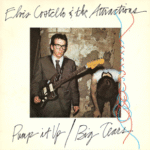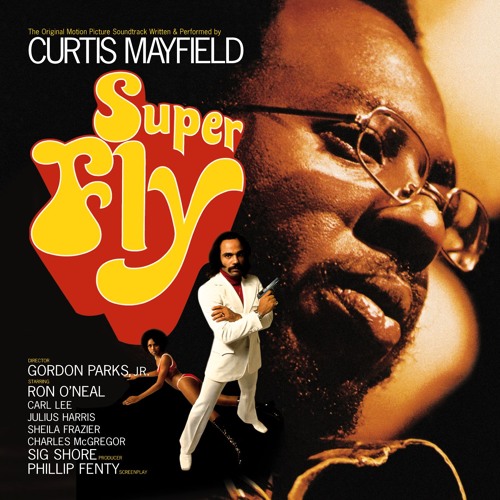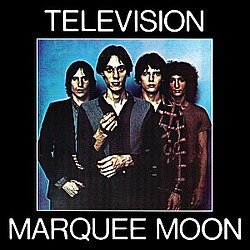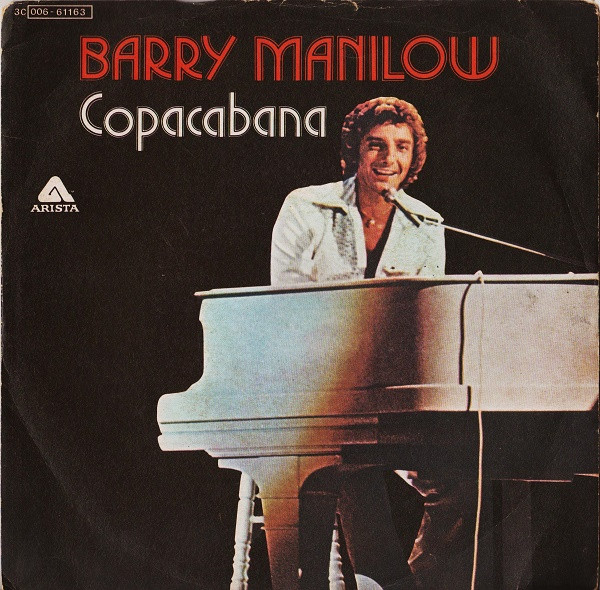 The late 1970s were a period of musical upheaval, a time when punk’s raw urgency collided with the burgeoning new wave scene to produce some of the most compelling and intelligent rock music of the era. In 1978, British singer-songwriter Elvis Costello released “Pump It Up”, a track that epitomized the energy, wit, and biting social commentary that would become hallmarks of his career. As the opening track of his album This Year’s Model, the song immediately established Costello as a fierce and perceptive voice within the post-punk landscape. With its driving guitar riff, relentless rhythm, and sardonic lyrics, “Pump It Up” captured the tension and frenetic energy of late-70s nightlife, while also satirizing the very culture it seemed to celebrate.
The late 1970s were a period of musical upheaval, a time when punk’s raw urgency collided with the burgeoning new wave scene to produce some of the most compelling and intelligent rock music of the era. In 1978, British singer-songwriter Elvis Costello released “Pump It Up”, a track that epitomized the energy, wit, and biting social commentary that would become hallmarks of his career. As the opening track of his album This Year’s Model, the song immediately established Costello as a fierce and perceptive voice within the post-punk landscape. With its driving guitar riff, relentless rhythm, and sardonic lyrics, “Pump It Up” captured the tension and frenetic energy of late-70s nightlife, while also satirizing the very culture it seemed to celebrate.
At its core, “Pump It Up” is a masterclass in contradiction: it’s both a danceable anthem and a critique of hedonism, a declaration of punk vitality and a witty commentary on the commercialized excess of the rock scene. The song’s propulsive energy, paired with Costello’s acerbic vocals, creates a sense of urgency that mirrors the fast-paced, sometimes shallow world he scrutinizes. Its lyrics are sharp, ironic, and layered with subtext, reflecting both personal observation and broader cultural critique. The track’s enduring appeal lies in its ability to function on multiple levels—as a visceral, irresistible rocker, a critique of rock excess, and a demonstration of Costello’s lyrical intelligence.
Elvis Costello and the Birth of a Sound
Elvis Costello, born Declan Patrick MacManus, emerged in the late 1970s as one of the most distinctive voices in British music. Known for his clever wordplay, socially conscious lyrics, and eclectic musical approach, Costello quickly distinguished himself from both the raw simplicity of punk and the flashy excess of mainstream rock. His early work, particularly This Year’s Model, reflected a commitment to intelligence and precision, blending elements of punk, new wave, and classic rock with a sharp lyrical edge.
“Pump It Up” exemplifies the qualities that defined Costello’s early career: biting commentary, intricate musical composition, and an ability to balance aggression with sophistication. Unlike the minimalism of some punk contemporaries, Costello employed complex song structures, tight guitar interplay, and layered instrumentation, creating a sound that was both immediate and enduring. His work with the backing band The Attractions—including Steve Nieve on keyboards, Bruce Thomas on bass, and Pete Thomas on drums—helped solidify his reputation as a performer capable of combining technical skill with raw energy.
Lyrics: Satire and Social Observation
The genius of “Pump It Up” lies as much in its lyrics as its instrumentation. Costello’s words are a rapid-fire commentary on the excesses and superficiality of the rock and club scene, delivered with characteristic wit and irony. Lines such as:
“Pump it up until you can feel it”
“Tonight, I’m gonna get me some frustration”
reveal both the allure and the absurdity of hedonistic nightlife, capturing the tension between indulgence and self-awareness. The song lampoons the cycle of excitement, exhaustion, and emptiness that often accompanies over-the-top social scenes, highlighting Costello’s keen observational abilities and sardonic humor.
Additionally, the lyrics contain a broader critique of desire, ambition, and human restlessness. Costello’s storytelling style blends immediacy with metaphor, offering listeners a narrative that is both specific and universal. Whether describing nightlife culture, romantic pursuit, or societal expectations, the song operates on multiple interpretive levels, allowing for both surface enjoyment and deeper reflection.
Musical Composition and Style
“Pump It Up” is propelled by one of the most recognizable riffs in late-70s rock, a driving, repetitive guitar line that functions as both anchor and propulsion. The riff, played by Costello himself, creates a sense of relentless momentum that mirrors the frenetic energy described in the lyrics. The rhythm section of The Attractions contributes significantly to this drive: Pete Thomas’s drumming is tight and propulsive, while Bruce Thomas’s bass provides a punchy counterbalance that underscores the song’s urgency.
Steve Nieve’s keyboard work adds texture without overwhelming the core riff, providing subtle flourishes that enrich the sonic landscape. The arrangement is taut and disciplined, reflecting Costello’s meticulous approach to composition. Despite its brevity—just over three minutes—the song conveys a sense of expansiveness through its intensity, demonstrating that energy and complexity can coexist in a concise rock track.
Context Within “This Year’s Model”
This Year’s Model, the album featuring “Pump It Up,” was a critical and commercial success that solidified Elvis Costello’s position as one of the most innovative songwriters of his generation. Opening with this track was a deliberate statement: Costello immediately sets a tone of urgency, wit, and self-awareness, signaling to listeners that the album would not shy away from critique or confrontation.
“Pump It Up” also reflects the album’s broader themes, including obsession, alienation, and the search for meaning amidst modern chaos. While the album contains slower, introspective tracks, this opener establishes the high-energy, confrontational side of Costello’s artistry, ensuring that listeners are engaged from the first note. The track’s combination of pop accessibility and intellectual engagement exemplifies the balance that defines much of Costello’s work.
Reception and Legacy
Upon its release in 1978, “Pump It Up” was met with critical acclaim. Reviewers praised its incisive lyrics, infectious energy, and innovative musical structure. It quickly became a staple of Costello’s live performances, often opening or energizing sets with its relentless drive. While it did not top mainstream charts, the song cemented Costello’s reputation as a smart, edgy, and uncompromising artist capable of blending commercial appeal with artistic integrity.
Over the decades, “Pump It Up” has continued to resonate with fans and musicians alike. Its riff and rhythm have been widely cited as influential, shaping the sound of new wave, alternative rock, and punk-infused pop. Bands from The Smiths to Green Day have acknowledged the track’s impact on their approach to energy, irony, and songcraft. Its longevity is a testament to its blend of immediate visceral appeal and enduring intellectual depth.
Live Performances and Audience Connection
“Pump It Up” has remained a centerpiece of Elvis Costello’s live repertoire. In concert, the song’s intensity is magnified, with The Attractions’ tight musicianship and Costello’s impassioned vocals creating a palpable sense of urgency. Fans often respond enthusiastically to the song’s iconic riff, chanting and moving along to the relentless rhythm. Its placement within live sets serves as both an energizing opener and a reminder of the power of succinct, high-impact rock music.
Live performances also allow Costello to vary phrasing, extend sections, and interact with the audience, emphasizing the song’s dynamic energy and performative versatility. This adaptability has helped the track endure across decades, ensuring that each performance retains freshness and vitality.
Influence on Subsequent Artists
“Pump It Up” has had a profound influence on musicians across genres. Its fusion of punk energy, new wave sophistication, and lyrical wit inspired countless artists seeking to merge technical skill with emotional and intellectual engagement. Guitarists have particularly noted the interplay between Costello’s riff and the rhythm section as a model for creating intensity without overwhelming complexity.
Additionally, the song’s sardonic approach to social critique has resonated with songwriters aiming to address culture, desire, and excess with intelligence and humor. Its influence is evident in the work of alternative rock, indie, and punk bands that followed, proving that a concise, high-energy track can be both musically innovative and socially insightful.
Technical Excellence and Sonic Craft
The technical brilliance of “Pump It Up” lies in its precise execution, balanced arrangement, and taut musicality. The riff-driven structure, combined with tight rhythm and subtle keyboard textures, demonstrates a careful attention to detail. Costello’s vocal delivery—sharp, urgent, and slightly sardonic—serves both the narrative and the rhythm, ensuring that the lyrics and instrumentation operate in harmony rather than competition.
The production, handled with clarity and punch, preserves the immediacy of the performance while enhancing its sonic impact. The track exemplifies how careful musicianship, lyrical intelligence, and production finesse can converge to create a song that is both exhilarating and enduring.
Conclusion: A Timeless Anthem of Wit and Energy
Released in 1978, “Pump It Up” by Elvis Costello stands as a defining moment in the fusion of punk energy and new wave sophistication. Its iconic riff, relentless rhythm, and razor-sharp lyrics capture the excitement, irony, and tension of late-1970s culture while demonstrating Costello’s mastery of songwriting and performance. The song’s blend of accessibility and intelligence, immediacy and depth, has ensured its lasting appeal, making it a touchstone for fans and musicians alike.
More than four decades after its release, “Pump It Up” continues to resonate for its ability to marry musical innovation with biting social commentary. It remains a high-energy anthem, a study in musical craft, and a witty reflection on desire, excess, and the human condition. Elvis Costello’s ability to combine intellectual sharpness with visceral impact ensures that “Pump It Up” endures not just as a relic of its era but as a timeless exemplar of rock brilliance, energy, and artistry.


